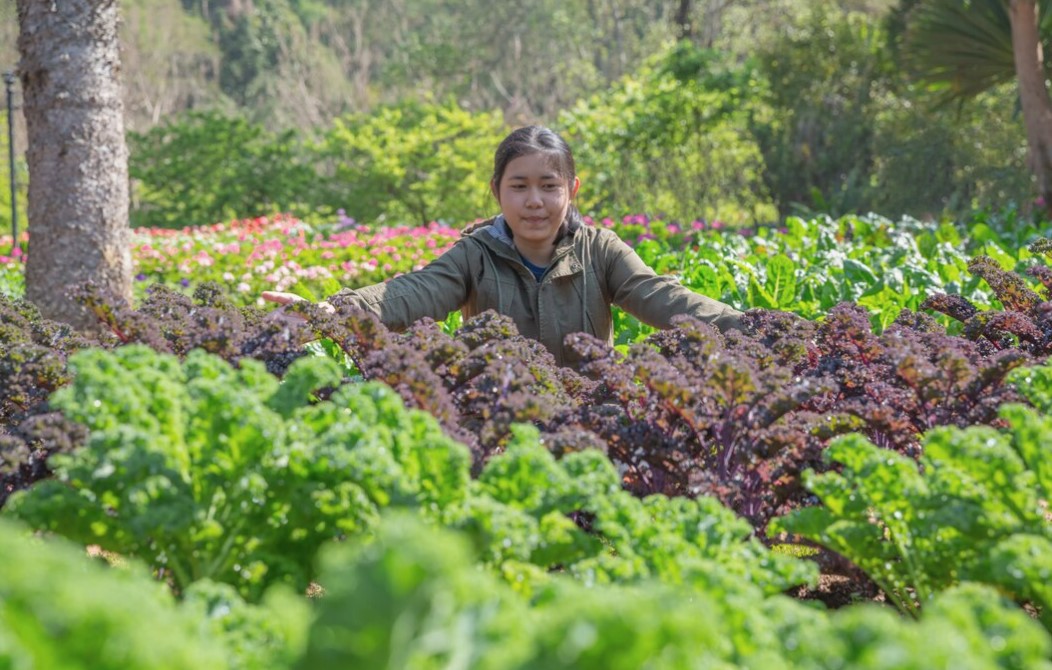Hillside vegetable gardening is not just a gardening method; it’s a unique adventure that allows you to make the most of your available space while cultivating fresh, homegrown produce. In this article, we’ll explore the ins and outs of vegetable gardening on a hill, from choosing the right slope to reaping a bountiful harvest.
Introduction
Definition of Vegetable Gardening on a Hill
Vegetable gardening on a hill involves cultivating crops on sloped terrain. This method maximizes space utilization and provides an opportunity to experiment with innovative gardening techniques.
Benefits of Hillside Gardening
Hillside gardening offers various advantages, including improved drainage, better sunlight exposure, and an aesthetically pleasing garden layout. It’s a sustainable approach that can turn a challenging landscape into a thriving source of fresh produce.
Choosing the Right Hill
Assessing Sunlight Exposure
Before embarking on your hillside gardening journey, evaluate the sunlight patterns on the slope. Ensure your chosen hill receives an adequate amount of sunlight for your selected vegetables.
Soil Quality and Drainage
Conduct a soil test to determine the soil composition and drainage capabilities. Hillside gardens require well-draining soil to prevent waterlogging and soil erosion.
Accessibility and Watering Considerations
Choose a hill that is easily accessible for planting and maintenance. Consider water accessibility and establish a reliable watering routine, especially during dry spells.
Planning Your Hillside Garden
Terracing Techniques
Terracing is a key aspect of hillside gardening. Create level platforms on the slope to prevent soil erosion and make planting and harvesting more manageable and also know about Vegetable Gardening on a Slope.
Plant Selection and Layout
Choose vegetables that thrive in your climate and are suitable for hillside cultivation. Plan the layout strategically, considering the slope for optimal sunlight exposure.
Utilizing Vertical Space
Hillside gardening provides a natural opportunity to use vertical space efficiently. Incorporate hanging baskets and trellises to make the most of every inch.
Preparing the Soil
Soil Amendments
Enhance the soil fertility with organic amendments. Compost, well-rotted manure, and other organic matter can improve soil structure and nutrient content.
Preventing Erosion
Implement erosion control measures such as cover crops and retaining walls to safeguard the soil from erosion during heavy rains.
Mulching Strategies
Apply mulch to regulate soil temperature, retain moisture, and suppress weeds. Mulching also adds organic matter to the soil as it breaks down.
Planting and Maintenance
Best Vegetables for Hillside Gardens
Opt for vegetables that adapt well to hillside conditions, such as tomatoes, beans, and lettuce. Research the specific needs of each plant and plan accordingly.
Watering and Fertilizing Tips
Maintain a consistent watering schedule, especially during dry spells. Use a balanced fertilizer to provide essential nutrients for robust plant growth.
Controlling Weeds and Pests
Regularly inspect your hillside garden for weeds and pests. Implement natural pest control methods to minimize the use of chemical pesticides.
Seasonal Considerations
Spring Planting
Kickstart your hillside garden in spring, taking advantage of the growing season and warmer temperatures.
Summer Maintenance
Monitor water levels and address any pest issues during the summer months. Consider shade structures for heat-sensitive plants.
Fall and Winter Preparations
Prepare your garden for the colder months by cleaning up debris, mulching, and protecting cold-sensitive plants.
Success Stories and Challenges
Real-life Examples of Hillside Vegetable Gardens
Explore success stories from gardeners who have successfully transformed challenging hillsides into flourishing vegetable gardens.
Common Issues and How to Overcome Them
Address common challenges like soil erosion, inadequate sunlight, and pest infestations with practical solutions and expert tips.
Sustainability in Hillside Gardening
Eco-Friendly Practices
Adopt eco-friendly practices such as rainwater harvesting and companion planting to promote a sustainable hillside garden.
Composting on a Hill
Establish a composting system on your hillside to recycle kitchen waste and enhance soil fertility.
Encouraging Biodiversity
Attract beneficial insects and pollinators by planting a variety of flowers alongside your vegetables, creating a balanced ecosystem.
Community and Social Aspects
Building Community Gardens on Hills
Explore the idea of communal hillside gardens to foster a sense of community and shared responsibility.
Sharing Experiences and Tips
Create a platform for gardeners to share their experiences, tips, and challenges, fostering a supportive community of hillside garden enthusiasts.
Conclusion
In conclusion, vegetable gardening on a hill is a rewarding endeavor that transforms challenging landscapes into productive and visually appealing spaces. With careful planning, proper maintenance, and a touch of creativity, you can create a thriving hillside garden that provides fresh, homegrown produce year-round.
FAQs (Frequently Asked Questions)
Can I start a hillside garden if my slope gets limited sunlight?
- Yes, but choose shade-tolerant vegetables and implement reflective surfaces to maximize sunlight.
How do I prevent soil erosion in a hillside garden?
- Terracing, cover crops, and retaining walls are effective erosion control measures.
What are some easy-to-grow vegetables for beginners in hillside gardening?
- Beginners can start with vegetables like tomatoes, zucchini, and lettuce.
Is it possible to have a year-round harvest in a hillside garden?
- Yes, with careful planning and selecting a variety of vegetables with staggered planting times.
Can I use raised beds for hillside gardening?
- Yes, raised beds can be a practical solution for improving drainage and soil control on slopes.





